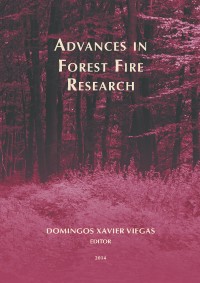Please use this identifier to cite or link to this item:
https://hdl.handle.net/10316.2/34289| DC Field | Value | Language |
|---|---|---|
| dc.contributor.author | Maffei, Carmine | |
| dc.contributor.author | Bonora, Laura | |
| dc.contributor.author | Maselli, Fabio | |
| dc.contributor.author | Mangiavillano, Adrien | |
| dc.contributor.author | Menenti, Massimo | |
| dc.date.accessioned | 2014-10-23T16:48:40Z | |
| dc.date.accessioned | 2020-09-09T21:31:14Z | - |
| dc.date.available | 2014-10-23T16:48:40Z | |
| dc.date.available | 2020-09-09T21:31:14Z | - |
| dc.date.issued | 2014 | - |
| dc.identifier.isbn | 978-989-26-0884-6 (PDF) | |
| dc.identifier.uri | https://hdl.handle.net/10316.2/34289 | - |
| dc.description.abstract | Several spectral indices based on measurements in the optical domain have been proposed for the estimation of equivalent water thickness (EWT), which is defined as the mass of liquid water per unit of leaf surface. However, fire models rely on the live fuel moisture content (LFMC) as a measure of vegetation moisture. LFMC is defined as the ratio of the mass of the liquid water in a fresh leaf over the mass of oven dry leaf, and traditional vegetation moisture spectral indices are not as effective in capturing LFMC variability. Recently, the perpendicular moisture index (PMI), based on MODIS, was proposed to overcome this limitation and provide a direct measure of LFMC. The aim of this research was to understand the potential and limitations of the PMI in predicting fire hazard. To this purpose, more than 19000 fire records in Provence-Alpes-Côte d'Azur (31400 km2), France, Toscana (22994 km2), Italy and Campania (13595 km2), Italy, over heterogeneous periods between 2000 and 2012 were compared against PMI derived from MODIS reflectance images. Results show that PMI maps capture both year-to-year variability of vegetation condition and its evolution during the advancement of the dry season. The PMI appears to be correlated with mean rate of spread and mean number of fires. | eng |
| dc.language.iso | eng | - |
| dc.publisher | Imprensa da Universidade de Coimbra | por |
| dc.relation.ispartof | http://hdl.handle.net/10316.2/34013 | por |
| dc.rights | open access | - |
| dc.subject | MODIS | eng |
| dc.subject | Live Fuel Moisture Content | eng |
| dc.subject | Perpendicular Moisture Index | eng |
| dc.subject | Fire hazard | eng |
| dc.title | The MODIS: based perpendicular moisture index as a tool for mapping fire hazard: indirect validation in three areas of the Mediterranean | por |
| dc.type | bookPart | por |
| uc.publication.firstPage | 1017 | - |
| uc.publication.lastPage | 1023 | - |
| uc.publication.location | Coimbra | por |
| dc.identifier.doi | 10.14195/978-989-26-0884-6_110 | - |
| uc.publication.section | Chapter 3 - Fire Management | por |
| uc.publication.digCollection | PB | por |
| uc.publication.orderno | 110 | - |
| uc.publication.area | Ciências da Engenharia e Tecnologias | por |
| uc.publication.bookTitle | Advances in forest fire research | - |
| uc.publication.manifest | https://dl.uc.pt/json/iiif/10316.2/34289/211319/manifest?manifest=/json/iiif/10316.2/34289/211319/manifest | - |
| uc.publication.thumbnail | https://dl.uc.pt/retrieve/11172312 | - |
| uc.publication.parentItemId | 53868 | - |
| uc.itemId | 70269 | - |
| item.grantfulltext | open | - |
| item.fulltext | With Fulltext | - |
| Appears in Collections: | Advances in forest fire research | |
Files in This Item:
| File | Description | Size | Format | |
|---|---|---|---|---|
| 978-989-26-0884-6_110.pdf | 1.95 MB | Adobe PDF |  |
Items in DSpace are protected by copyright, with all rights reserved, unless otherwise indicated.
